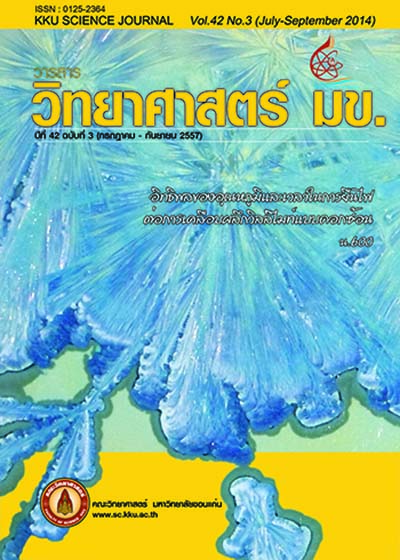Synthesis and Biological Investigation of Nano-Organic and Nano-Organometallic Agents
Main Article Content
Abstract
This research deals with physicochemical characterization and biological investigation of organic nanoparticles and organometallic nanoparticles using natural product as reducing agent against fungi of plant diseases, scavenging anti-free radical toxicity, Pseudococcus sp. and Nilaparvata lugens (Stal). The results showed that nano-organic particles are global–like structure and nano-organometallic particles are rod-like structures. All of them showed highest biological effect against Nilaparvata lugens (Stal) within 30 minutes by which sample C4 killed them with 100 % at 10 minutes. On the other hand, such compounds killed Pseudococcus sp.
within 10 minutes but for C4 spent 2 minutes only. The research finding also revealed that all of six compounds inhibit fungi of plant diseases and anti-free radical toxicity in nature with C2 and C4. It indicated the highest activities to fungi diseases in responding to the influence of nanoparticles and anions in use. However, Schiff base compounds (L1, L2) are less active than their derivative particles. For free radical scavenging activities with DPPH technique revealed that all nanoparticles shown high potent antioxidant susceptibility which low IC50, especially compounds exhibit highly potency effective are L1, C1 and C3, respectively. For FRAP technique, the such particles reduced Fe3+ to Fe2+ concentrated form like L2 and C4. This research work promises it to useful for agricultural groups that facing plant disease and also for chemist to screen them as drug for human being.
Article Details

This work is licensed under a Creative Commons Attribution-NonCommercial-NoDerivatives 4.0 International License.


